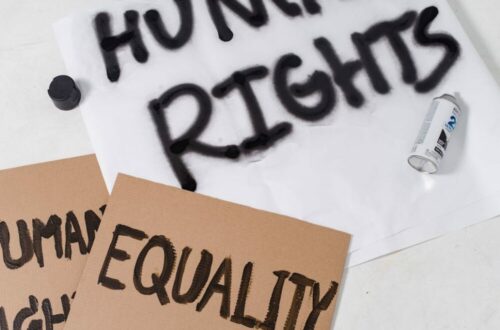
Editorial | Volume 24 No. 9
Dear Readers and Friends,
We are delighted to bring you this latest issue, a combination of three diverse and appealing individual articles and a series of shorter interventions that form a Special Section on ‘The FIFA World Cup 2022 and the struggle for human rights in Qatar’.
Panu Minkkinen kicks off the issue with an article exploring the unique work of German legal historian and legal theorist Cornelia Vismann (1961-2010) who died far too young. By going deep into her background in media studies that are at the heart of Vismann’s interest in law’s ‘cultural techniques’, Minkkinen presents ‘another Vismann’ and highlights a component of her work that remained less received in the Anglophone world.
Arianna Vedaschi and Chiara Graziani take stock of the legal reactions to the COVID-19 pandemic in a broad comparative outlook. They describe these reactions as a distinct legal regime with effects on the horizontal and vertical separation of powers and the reviewability of limitations to human rights and personal freedoms by bodies exercising constitutional review. Among a wealth of interesting findings, the authors conclude that respective legal responses to the pandemic reflect their constitutional identities, did not come out of the blue and are likely to persist.
Catarina Santos Botelho and Nuno Garoupa turn to a timeless question of constitutional law, that is constitutional rules regulating political parties. Drawing on a large-scale comparative data set of 37 liberal democracies, the authors argue for a combination of ex-ante and ex post regulatory mechanisms and place their data analysis in the context of the debate in constitutional theory.
***
Our issue 24.9 then turns to the Special Section that is devoted to a most telling case of transnational law ‘at work’: Guest editors Antoine Duval and Daniela Heerdt have curated a series of contributions under the umbrella ‘The FIFA World Cup 2022 and the struggle for human rights in Qatar’. As Duval and Heerdt explain in their editorial, while just a bit over a year ago, all eyes were on the small emirate for reasons reaching much beyond soccer—including for its labor rights record, especially towards migrant workers and its respect of LGBTQ+ rights—the public spotlight has quickly shifted elsewhere as the show moved on. The contributions retrace the unprecedented build-up of transnational advocacy on labor and LGBTQ+ rights since the award of the World Cup in 2010 as well as Qatar’s reaction to it, in legislative and diplomatic terms. Authors examine how the transnational struggle for rights is tied to the attention cycles brought through the global spectacle of a World Cup. Looking back a year later, what remains from a decade of transnational mobilization ahead of the World Cup and what does it teach us about conflictual narratives of human rights?
Carl Emilio Lewis draws from international relations literature to set out Qatar’s response to international shaming. His analysis reveals the ambivalence of shaming as a human rights enforcement strategy which may push target states to question their status within the international legal community and may trigger rather cosmetic reforms in reaction.
Shubham Jain takes insights from relativist critiques of human rights as a framing to the human rights campaign targeting Qatar around the World Cup—a campaign that drew largely on the universal and absolute language of human rights. These alleged strengths of human rights as an instrument of change in reality caused significant limitations to the success of the campaign.
Andrew Brady Spalding provides a comparative analysis between the Qatar’s reforms of LGBTQ+ laws on the one hand and of (migrant) labor rights on the other. He argues that Qatar’s reluctance to engage in the former while claiming high commitment to the latter can be understood by distinguishing ‘principles’ and ‘practices’. ‘Principles’ are deeply rooted in a country’s political, cultural, or religious belief system—such as sexual morality—and hence resistant to reform, while ‘practices’ find support in convenience, profit, and self-interest and are hence more prone to pragmatic change.
Antoine Duval dives into the confluence of spectacle, counter-marketing, international—labor and human rights—law, and local reforms. As a reaction to seeing the World Cup ‘ambushed’ in the name of Qatar’s migrant workers, the Qatari government opted for a strategy of ‘ambush counter-marketing’. This entailed an open and cooperative demeanor on the transnational stage while keeping legal reforms limited in scope and implementation.
Zachary R. Calo’s contribution assesses the effectiveness and robustness of Qatar’s labor reforms enacted in the context of the World Cup. Focused principally on dispute resolution and enforceability, he introduces existing weaknesses of the pre-reform labor regime in Qatar and concludes skeptically as to the reform’s potential to deliver genuine justice to workers.
Daniela Heerdt turns to FIFA’s reaction to the human rights situation surrounding the World Cup, in particular the introduction of the FIFA human rights volunteers (HRV) program that monitored human rights issues at event venues on match days. The program can be considered an element of an organization’s human rights due diligence and remedy efforts.
The contributions tell an astounding story of how the transnational struggle for human rights intersects with Qatar’s drive for soft power and nation branding, all through the prism of a mega-sporting event that put Qatar on the world stage for a very specific moment in time.
As always, happy reading,
Klaas Hendrik Eller
on behalf of the GLJ Editors-in-Chief







